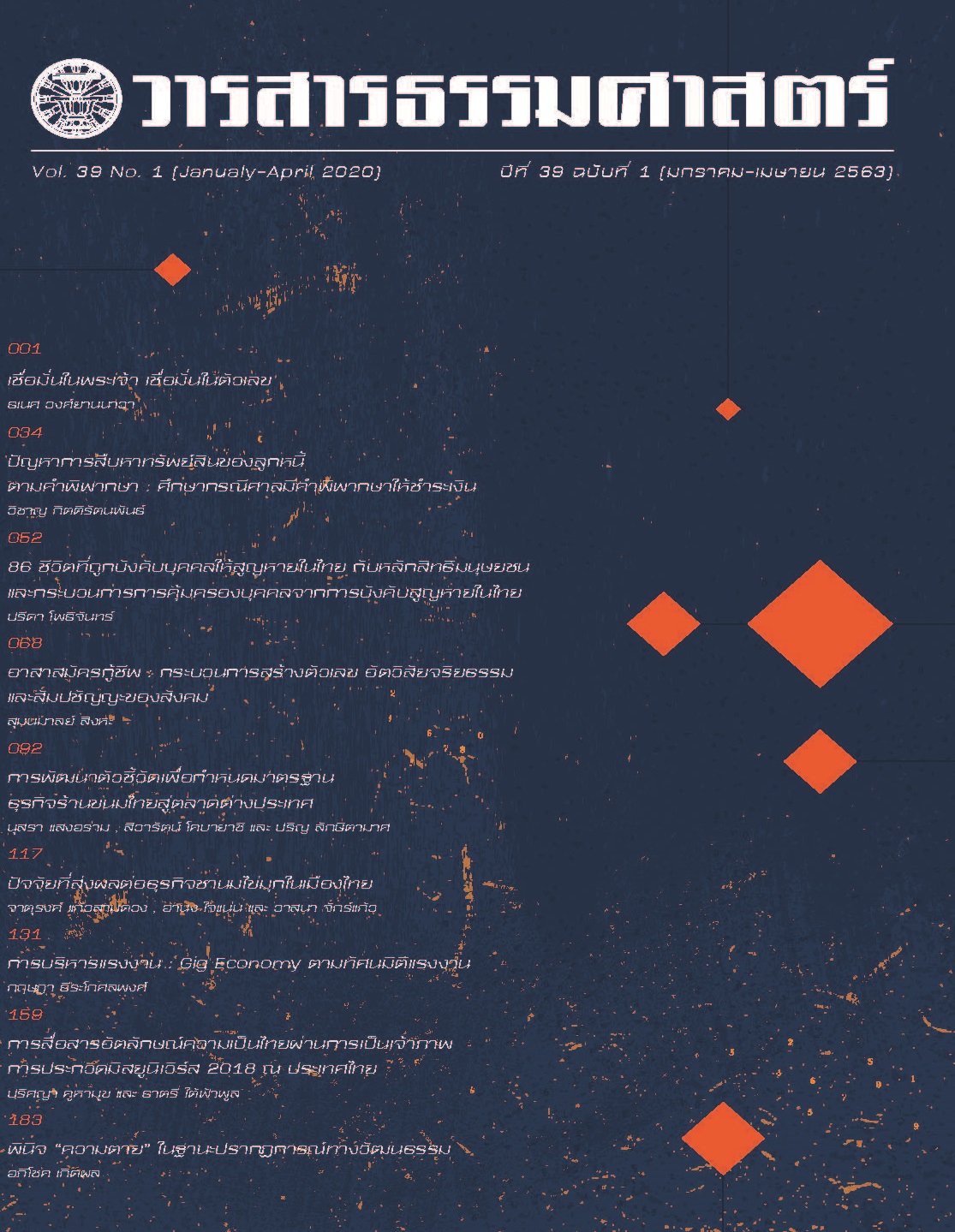Scrutinize “Death” as a Cultural Phenomenon
Main Article Content
Abstract
Death is one of the most important moments of human. Death is not just a bio-physical phenomenon, but also a cultural phenomenon. Socials' knowledge about death dynamically changed overtime. In ancient civilization such as Tigris-Euphrates,
Niles, and Ancient Greece, definition of death was bonded with vary local religion. In the middle age, main religion of the world, Christian and Islam, influenced the world in large area and took authority of death definition making in large number of socials and
civilizations. After the enlightenment era, as a result of scientific revolution and industrial revolution, science was proved that it brings humanity to the dramatically development. Science took the main roll in many aspect and the roll of death definition maker also. Religious doctrine explanation about life and death was weaker because of science. Human life was believed as monism, just physical and no spiritual component at all.
This study found that definition of death is inevitably bonded with beliefs. Even though scientific explanation about death derives from the foundation of a kind of belief. Thus, the definition of death in the sense of human is a bottom-line product of contending for definition by power of a maker's authority, in the form of discourse, which crystallized in discursive field to be a main idea in society.
Article Details
References
เจษฎา ทองรุ่งโรจน์. (2557). พจนานุกรมอังกฤษ-ไทย ปรัชญา. กรุงเทพฯ: สำนักพิมพ์แสงดาว.
ปรานี ฬาพานิข. (2549). อิสลาม: ความตายไม่ใช่จุดจบของชีวิต. ใน โสรัจจ์ หงศ์ลดารมภ์, ความตายกับการตายมุมมองจากศาสนากับวิทยาศาสตร์, 179 – 194. กรุงเทพฯ:ศูนย์จริยธรรมวิทยาศาสตร์และเทคโนโลยี คณะอักษรศาสตร์ จุฬาลงกรณ์มหาวิทยาลัย สำนักพิมพ์มูลนิธิพันดารา.
วรยุทธ ศรีวรกุล. (2549). ชีวิต ความตาย และการตาย: มุมมองของชาวคริสต์. ใน โสรัจจ์ หงศ์ลดารมภ์, ความตายกับการตายมุมมองจากศาสนากับวิทยาศาสตร์, 195 – 204. กรุงเทพฯ:ศูนย์จริยธรรมวิทยาศาสตร์และเทคโนโลยี คณะอักษรศาสตร์ จุฬาลงกรณ์มหาวิทยาลัย สำนักพิมพ์มูลนิธิพันดารา, 180 - 181.
โสรัจจ์ หงศ์ลดารมภ์ (2560). ปรัชญาทั่วไป. กรุงเทพฯ: สำนักพิมพ์แห่งจุฬาลงกรณ์มหาวิทยาลัย.
อภิญญา เฟื่องฟุสกุล (2551). มานุษยวิทยาศาสนา แนวคิดพื้นฐานและข้อถกเถียงทางทฤษฎี, เชียงใหม่: ภาควิชาสังคมวิทยาและมานุษยวิทยา มหาวิทยาลัยเชียงใหม่.
Bonner, M. (2006). Jihad in Islamic History Doctrines and Practice. New Jersey: Princeton University Press.
Cook, D. (2005). Understanding Jihad. California: University of California Press.
Hawley J. S. (1994). Sati, the Blessing and the Curse: The Burning of Wives in India. New York: Oxford University Press.
Hori, I. (1962). Self-Mummified Buddhas in Japan. An Aspect of the Sugen-Dȏ (Mountain Ascetism). History of Religions, 1(2), 222 – 242.
Perrett, R. W. (1987). Death and Mortality Studies in Philosophy and Religion 10. Dunedin: Springer-Science+Business Media.
--------------------. (1987). Death and Mortality Studies in Philosophy and Religion 10. Dunedin: Springer-Science+Business Media, 35.
Segal, A. F. (2004). Life after Death A History of the Afterlife in the Religions of the West. epub version: Doubleday
Segal, A. F. (2004). Life after Death A History of the Afterlife in the Religions of the West. epub version: Doubleday, 40-41.
-------------. (2004). Life after Death A History of the Afterlife in the Religions of the West. epub version: Doubleday, 172.
-------------. (2004). Life after Death A History of the Afterlife in the Religions of the West. epub version: Doubleday, 506,512.
-------------. (2004). Life after Death A History of the Afterlife in the Religions of the West. epub version: Doubleday, 517-519.

